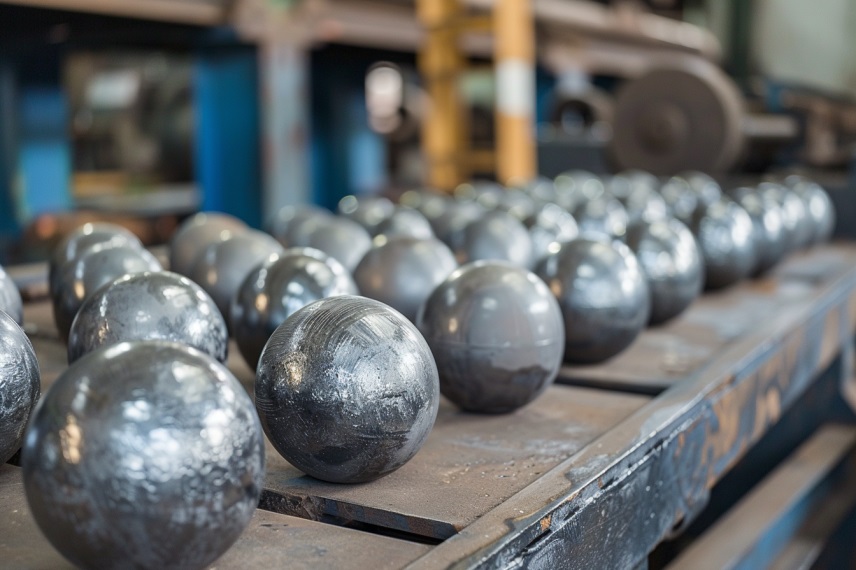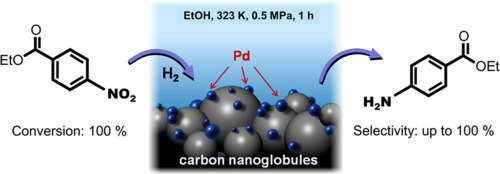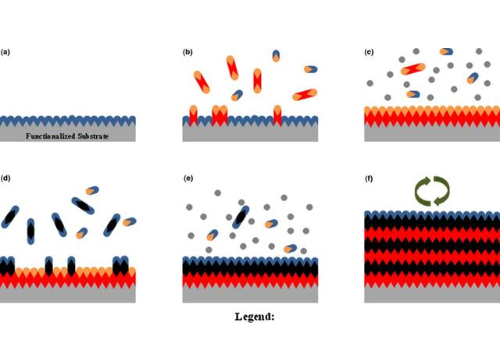Cast Grinding Balls vs. Forged Grinding Balls: Making the Right Choice
In the realm of industrial operations, particularly within mining and cement production, the role of grinding balls cannot be overstated. These spherical tools are pivotal in the grinding process, tasked with reducing materials to the desired fineness, thereby facilitating efficient processing and extraction. The selection between cast and forged grinding balls is a critical decision that influences not just the efficiency of milling operations but also factors such as energy consumption and overall cost.
While cast grinding balls are celebrated for their cost-effectiveness in high-volume applications, forged grinding balls are lauded for their superior durability and wear resistance, making them ideal for high-impact and precision-required tasks.
Stanford Advanced Materials (SAM) emerges as a key player in this arena, supplying quality materials that significantly enhance the performance and longevity of both types of grinding balls. This article delves into the intricacies of choosing between cast and forged grinding balls, highlighting how material quality and manufacturing processes impact their efficiency, durability, and cost-effectiveness, thereby ensuring optimal outcomes in industrial grinding operations.

Overview of Grinding Balls
Grinding balls are essential components in the industrial processing of various materials, serving as the primary medium in grinding machines to crush or grind materials into finer powders or pulps. They are made from various metals and alloys and are utilized across a wide array of industries, including mining, cement manufacturing, mineral processing, and even power plants for coal grinding.
The primary function of grinding balls is to reduce particle size in a manner that promotes efficient processing and extraction, thereby playing a crucial role in the overall productivity and efficiency of industrial operations.
The effectiveness of grinding balls is measured by their ability to achieve the desired fineness of materials with minimal energy consumption, making their role indispensable in optimizing the grinding process. As such, the quality, durability, and performance characteristics of grinding balls are vital considerations for any operation aiming to enhance its milling and grinding capabilities.
Introduction to Cast Grinding Balls
Cast grinding balls have been a cornerstone in various industrial processes for decades, tracing their origins back to the early days of milling and grinding operations. Their evolution is closely tied to advancements in casting technologies and materials science, enabling the production of balls that meet the rigorous demands of modern industrial applications. Initially, casting methods were rudimentary, focusing on simple techniques to create spherical shapes from molten metal. However, as industries evolved, so did the casting process, incorporating more sophisticated methods to enhance the uniformity, durability, and performance of the grinding balls.
The materials used in manufacturing cast grinding balls primarily include high-carbon steel, chrome steel, and various alloy steels. These materials are selected for their ability to withstand the high impact and abrasion encountered during grinding processes. SAM plays a pivotal role by supplying high-quality alloys that significantly improve the hardness and wear resistance of these balls. The casting process involves pouring molten metal into molds, where it solidifies into the desired spherical shape. Modern advancements in cooling and solidification techniques have further improved the quality of cast grinding balls, ensuring they meet the stringent standards required for efficient and reliable milling operations. Through continuous innovation in materials and manufacturing processes, cast grinding balls have become more durable and effective, meeting the diverse needs of industries worldwide.
Introduction to Forged Grinding Balls
Forged grinding balls boast a storied legacy, tracing their origins back to ancient blacksmithing techniques where the forging process was pivotal in producing tools and weapons with unparalleled durability and precision. This historical prowess has evolved into modern industrial applications, where forged grinding balls are indispensable in processes that demand high-impact resistance and precision.
Typically made from high-carbon steel or alloy steel, these balls benefit from the forging process's ability to enhance the material's physical properties. The process involves heating the steel to a high temperature before hammering or pressing it into shape, effectively aligning the metal's grain structure. This alignment enhances the strength and wear resistance of the balls, making them ideal for the rigorous conditions of mining and ore processing.
The materials used in forging, supplied by companies like Stanford Advanced Materials (SAM), are crucial for ensuring the balls' performance. High-quality steel is selected for its ability to withstand the intense environments of grinding applications, ensuring that forged grinding balls exhibit exceptional durability. The forging process itself is celebrated for producing grinding balls that not only meet but exceed the demands of high-impact and precision grinding tasks, setting a high standard for efficiency and reliability in industrial milling operations.
Key Differences Between Cast and Forged Grinding Balls
A. Material Composition
Cast grinding balls are primarily made from high-carbon steel, chrome steel, and occasionally alloy steels, tailored for high hardness and wear resistance. The casting process involves melting these materials and pouring them into molds to form the balls. Forged grinding balls, while also made from similar types of steel, are shaped under high temperature and pressure, leading to a different end composition that emphasizes the steel's inherent strength and ductility.
B. Microstructure and Density
The microstructure of cast grinding balls tends to be more heterogeneous due to the nature of the cooling process following casting, potentially leading to a less uniform distribution of internal stresses. In contrast, the forging process aligns the grain structure of the steel, resulting in a denser and more uniform microstructure. This uniformity enhances the overall strength and durability of forged balls, making them less susceptible to micro-cracks and wear over time.
C. Hardness and Wear Resistance
Generally, forged grinding balls exhibit higher hardness and superior wear resistance compared to their cast counterparts. This is largely due to the intense compaction and heat treatment applied during forging, which enhances the mechanical properties of the steel. Cast balls, while still hard and wear-resistant, may not achieve the same level of performance, especially under extreme grinding conditions that demand the utmost in durability.
D. Impact Toughness and Breakage Rate
Impact toughness is where forged grinding balls significantly outperform cast balls. The forging process enhances the toughness of the balls, making them more capable of absorbing high-impact forces without fracturing. Consequently, forged balls have a lower breakage rate when subjected to the rigorous conditions of milling operations. Cast balls, although economical and effective for certain applications, are more prone to breakage under high impact, affecting operational efficiency and increasing the need for replacements.
E. Cost Considerations
Initially, cast grinding balls are less expensive to produce than forged balls, due to the less labor-intensive nature of the casting process. However, the longer lifespan and lower breakage rate of forged balls may render them more cost-effective in the long run, particularly in operations where downtime and replacement costs are significant. The choice between cast and forged balls, therefore, involves not just an assessment of upfront costs but also an analysis of long-term operational expenses.
This table summarizes the fundamental distinctions in material composition, microstructural integrity, mechanical properties, and economic factors between cast and forged grinding balls, aiding in the decision-making process for their application in various industrial contexts.
| Criteria | Cast Grinding Balls | Forged Grinding Balls |
|---|---|---|
| Material | High-carbon, chrome, and alloy steels | Similar, but enhanced for strength |
| Microstructure | Heterogeneous, uneven stress distribution | Uniform, dense, reduced micro-cracks |
| Hardness & Wear | High, but potentially less than forged | Superior, due to processing |
| Impact & Breakage | Less tough, more breakage | Higher toughness, lower breakage rate |
| Cost | Lower initial cost | Higher initial, lower long-term costs |
Cast or Forged: How to Choose?
Choosing between cast and forged grinding balls involves a nuanced understanding of your specific application requirements, operational costs, and the critical importance of material quality. This decision significantly impacts the efficiency, longevity, and cost-effectiveness of grinding operations in industries such as mining, cement manufacturing, and more. Here's a comprehensive guide to help you make the right choice:
Application Requirements
Impact and Abrasion Levels: Evaluate the level of impact and abrasion the grinding balls will face. For high-impact environments, such as SAG and ball mills in mining operations, forged grinding balls are preferable due to their superior impact toughness and lower breakage rate. For applications with lower impact forces but high abrasion, cast grinding balls might suffice.
Grinding Efficiency Needs: Consider the efficiency required for your grinding process. Forged balls, with their higher density and uniform microstructure, offer better control and precision, making them suitable for tasks requiring high grinding efficiency. Cast balls might be more beneficial for bulk processing where cost is a primary concern.
Operational Costs and Lifespan
Initial vs. Long-term Costs: While cast grinding balls have a lower initial cost, forged balls may offer more value over time. Their durability and lower breakage rate can reduce downtime and replacement costs, potentially offering a lower total cost of ownership.
Energy Consumption: Forged grinding balls can also contribute to lower energy consumption by improving grinding efficiency. Consider the potential savings in energy costs when choosing between cast and forged options.
Material Quality
The quality of materials used in grinding balls significantly affects their performance and lifespan. High-quality materials can enhance the hardness, wear resistance, and impact toughness of grinding balls, whether cast or forged. Partnering with a reputable supplier like Stanford Advanced Materials (SAM) ensures access to premium materials, enhancing the performance and longevity of the grinding balls.
Making the Decision
Consultation with Experts: Engage with material and grinding process experts to assess the best option for your specific needs. Their insights can guide you through the complexities of choosing the right grinding ball type.
Trial and Evaluation: If possible, conduct trials with both cast and forged balls in your operation. This direct comparison can provide valuable data on performance, wear rates, and overall cost-effectiveness, helping to inform a more accurate selection.
This table provides a structured approach to evaluating the key factors in selecting cast or forged grinding balls, including application requirements, costs, and the importance of material quality. It suggests practical steps for assessment, such as consulting with experts and conducting trials, to make an informed choice.
| Consideration | Cast Grinding Balls | Forged Grinding Balls | Evaluation Tips |
|---|---|---|---|
| Impact and Abrasion | Suitable for low to medium impact and high abrasion | Preferred for high impact and lower abrasion | Assess the grinding environment and material to be processed |
| Grinding Efficiency | Efficient in bulk processing where cost is a concern | Higher efficiency for precise and controlled grinding | Consider the required precision and efficiency of the grinding process |
| Costs | Lower initial cost | Higher initial cost but potentially lower long-term due to durability | Compare initial purchase costs against potential savings in replacement and downtime |
| Energy Consumption | May require more energy due to lower efficiency in some applications | Can lower energy costs through improved efficiency | Estimate the impact on energy costs based on grinding ball performance |
| Material Quality | Quality affects wear resistance and lifespan | Superior material quality enhances performance and lifespan | Ensure high-quality materials from reputable suppliers for both options |
Conclusion
In conclusion, the choice between cast and forged grinding balls is pivotal, impacting the efficiency, durability, and cost-effectiveness of grinding operations across various industries. This decision should be informed by a thorough evaluation of application requirements, operational costs, and the quality of materials. Forged balls, with their superior impact toughness and durability, are well-suited for high-impact applications, whereas cast balls offer an economical solution for less demanding conditions.
High-quality materials, as provided by reputable suppliers, are crucial in maximizing the performance and lifespan of both types. Ultimately, making an informed choice, supported by expert consultation and possibly trials, ensures the selection of the most suitable grinding balls for specific operational needs, leading to improved outcomes and operational efficiencies.




